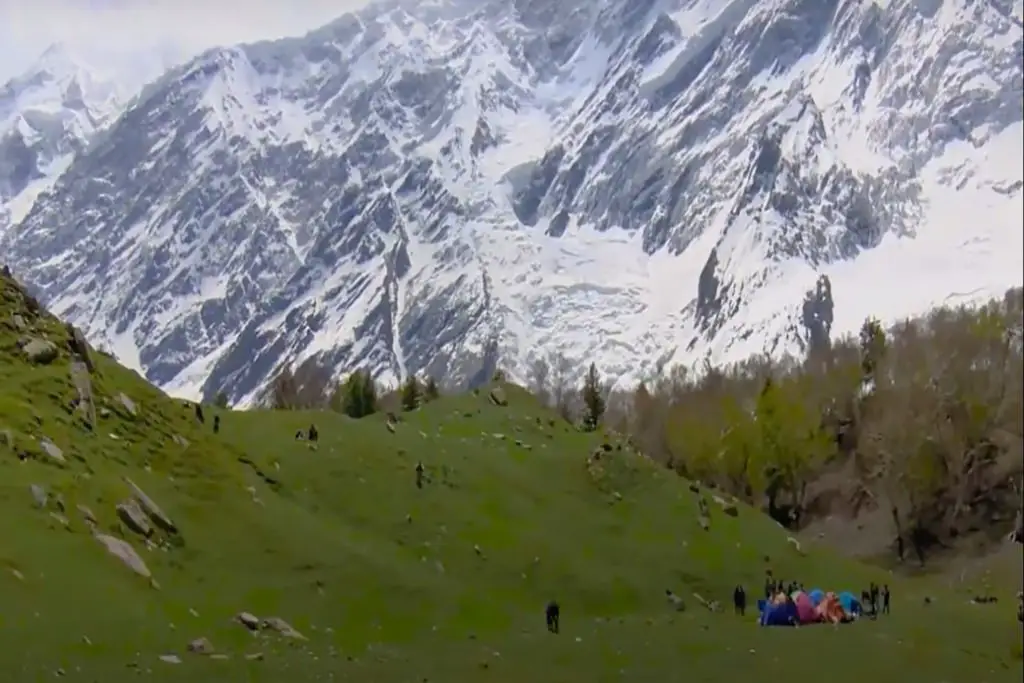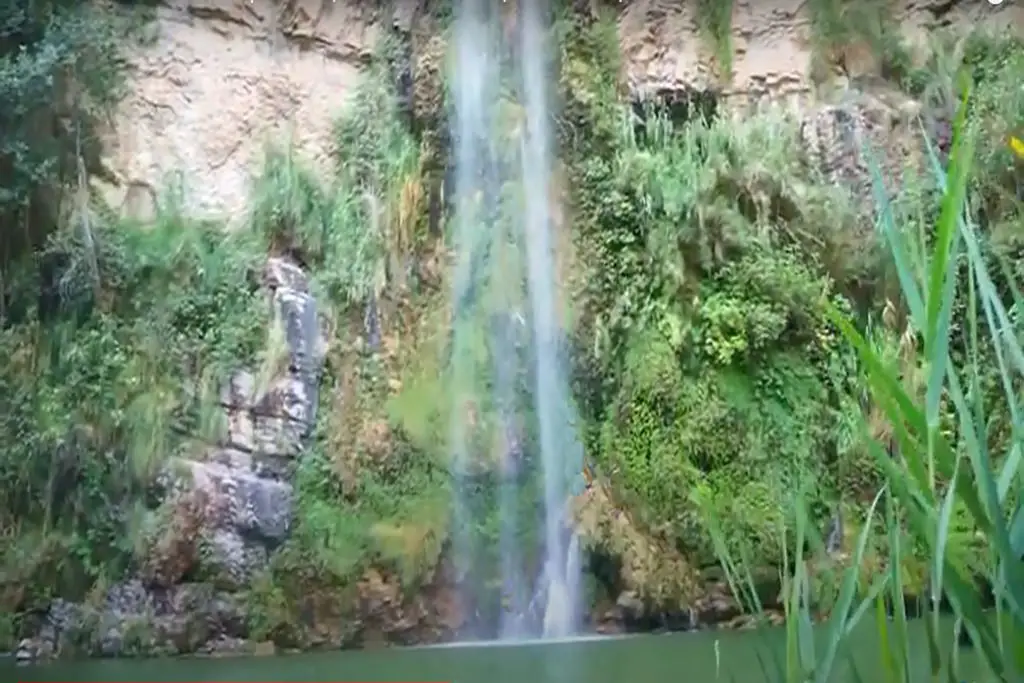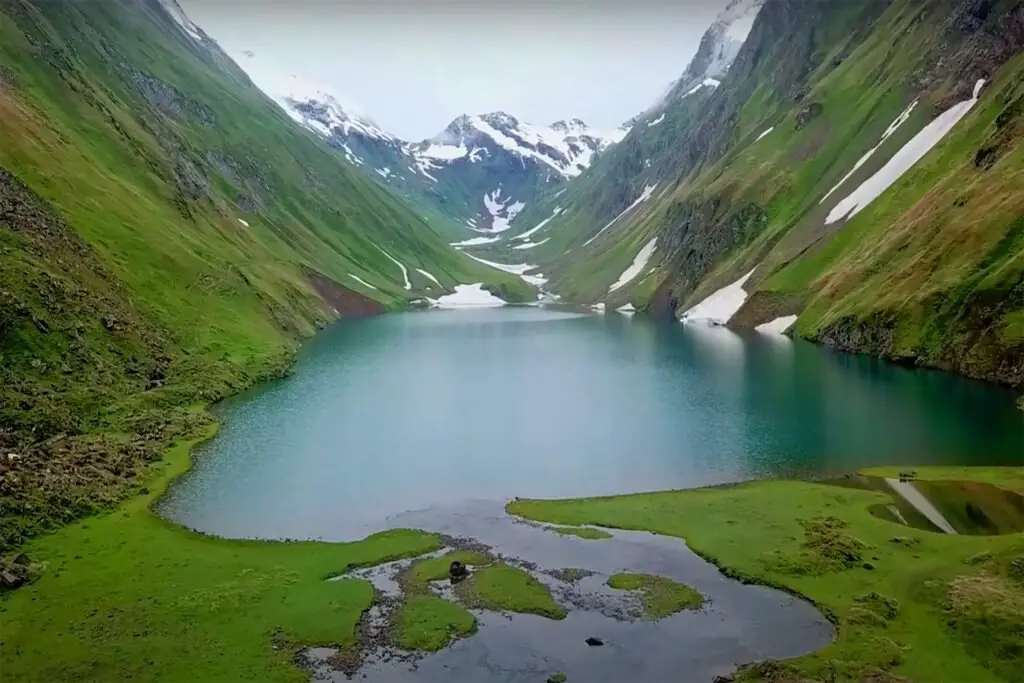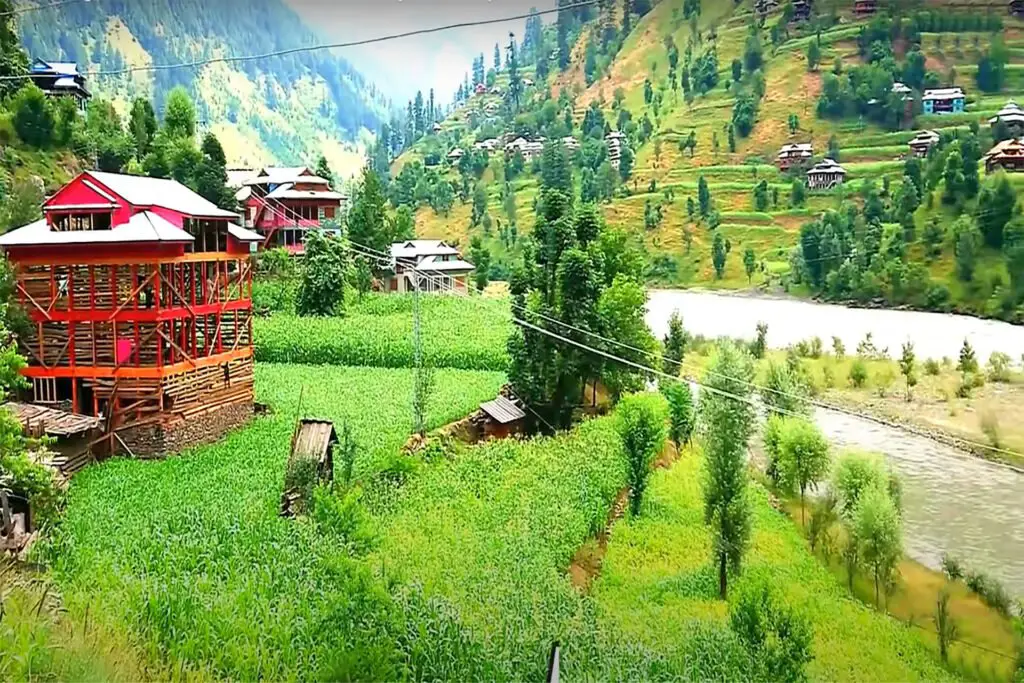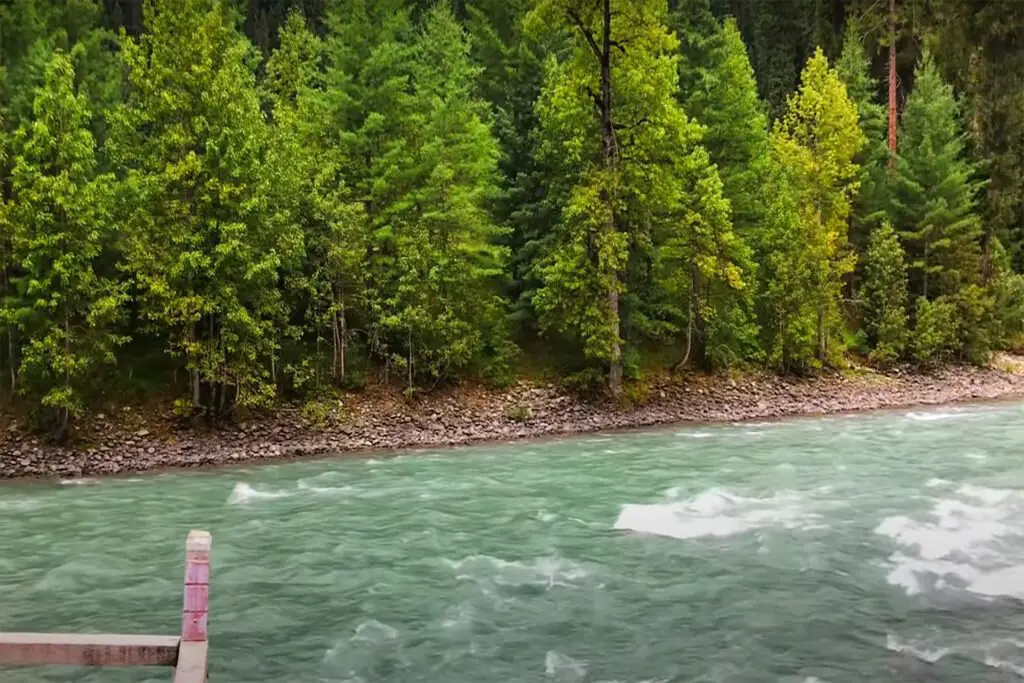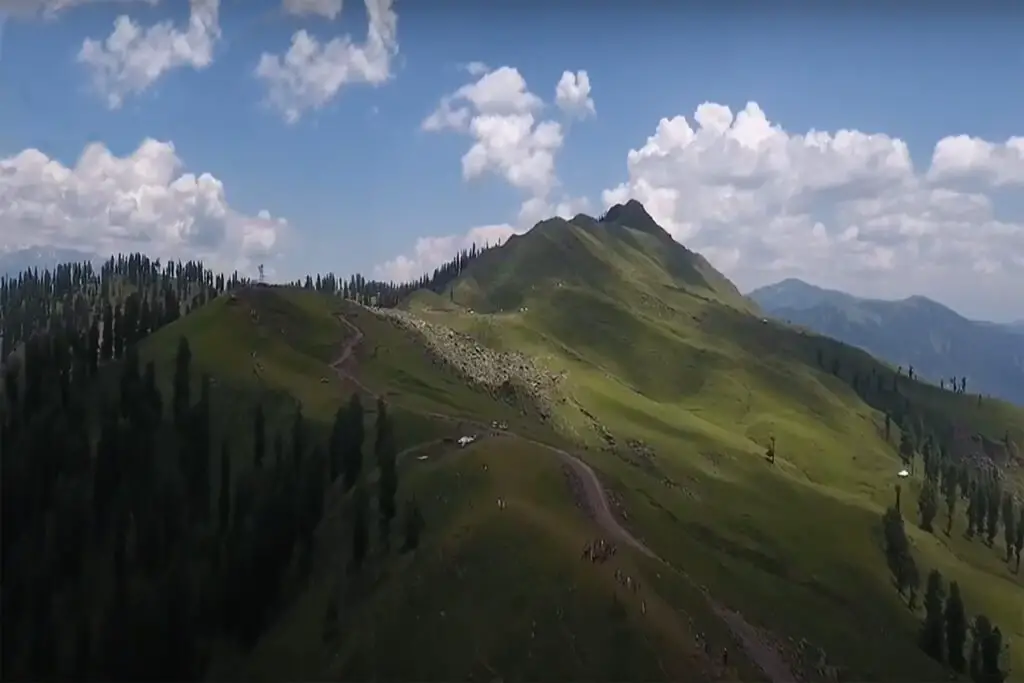The Haramosh Valley in Gilgit Baltistan is a dream destination for tourists, particularly those who are passionate about hiking and have a deep love for nature. Situated in close proximity to Gilgit, approximately 40 miles (65 km) away, visiting the Haramosh Valley is like living a dream within a dream. As you ascend towards higher altitudes, you’ll witness a transformation in the scenery – lush greenery flourishes, the water turns pristine and radiant, and the fragrant flowers bloom under the brilliant sun. This valley is truly a haven for enthusiasts of the natural world.
The Beauty of Haramosh Valley Gilgit Baltistan
The magnificent splendor of the Haramosh Valley Gilgit adorned with Kutwal Lake and Laila Peak is rarely seen by tourists visiting Gilgit-Baltistan. The hike to the Haramosh valley offers a spectacular view of the meadows, rich pastures, snow-capped mountains like Haramosh Peak, the famous Laila Peak, beautiful surrounding villages that attract the Haramosh pass, glaciers, and the emerald Kutwal Lake.
The Haramosh Valley Gilgit, a fascinating nature resort in the beautiful north of Pakistan, is about 40 miles [60 km] east of Gilgit. It is in the middle of the Rakaposhi-Haramosh massif which is the lowest point of Karakoram where Haramosh passes at a height of 4800 meters above sea level.
History of Haramosh Valley
The Swiss team discovered Haramosh Valley in 1947 as it continued its journey along the route and was followed by a German team in 1955, which took the northeast route to reach Haramosh. The Oxford University team also tried to reach Haramosh but failed due to the deaths of two members. This unsuccessful journey is described by Ralph Barker in his book “The Last Blue Mountain”.
Three Austrian mountaineers successfully climbed Haramosh on August 4, 1958, passing Haramosh La.
Records show that there have been only three other conference attempts, one in 1978 (Japan, West Ridge), the second in 1979 (unknown group), and another in 1988 (Polish, Southwest Face).
Route to Haramosh Valley Gilgit Baltistan
First, we need to get to Sassi. Sassi is a small town on Gilgit-Skardu Road. Only jeeps can travel from Sassi onwards. From Sassi take a jeep to the village of Dassu. It takes 2 days from Dassu to this beautiful valley. It only takes two days due to lack of road.
There is another track to this beautiful village from the Shigar Valley Baltistan region in Gilgit Baltistan. But that trip took about a week. Even hikers should try this place with perfect planning, camping gear, food, etc. A well-planned trip with a skilled tourist can save a lot of time and help with problems because of any language differences.
Kutton Waterfall is the most beautiful waterfall in Neelum Valley. It is the 3rd tourist spot in Neelum Valley. The actual name of this waterfall is the Kundal Shahi waterfall as it is located in Kundal Shahi Village in Neelum Valley. Because its water comes from Kutton that’s why it is called Kutton waterfall.
The journey to Haramosh, a stunning region in the Gilgit-Baltistan area of Pakistan, is an adventure that takes you through some of the most challenging terrains and breathtaking landscapes.
To reach Haramosh, you can start from Jaglot and head towards Skardu in the Gilgit-Baltistan region. Your journey will lead you to Sassi town. From Sassi, you’ll need to switch to a jeep to reach the village of Dache, also known as Dassu, situated at an elevation of approximately 2400 meters. This leg of the trip takes about an hour and brings you closer to your destination, Haramosh.
As you travel from Sassi to Haramosh, you should be prepared for the challenging conditions you may encounter. The route is known for strong winds and is susceptible to landslides, making it a difficult and perilous journey. The natural beauty and rugged terrain along the way, however, are sure to leave you awestruck.
The jeep track to Haramosh starts about 53 kilometers from Gilgit on the Gilgit-Skardu road, running parallel to the roaring Indus River. The road is the beginning of a demanding two-day trek to Haramosh village. During this trek, you will pass through flowing streams, and dense pine forests, and eventually cross Mani. You’ll encounter snowy terrain as you make your way from Baska to reach Kutwal Village.
From Kutwal Village, the journey continues through mostly lush, green areas for approximately 1.5 hours, leading you to Kutwal Lake. This tranquil camping site at Kutwal Lake is a breathtaking sight, surrounded by the beauty of nature in all its glory.
The trip to Haramosh is an unforgettable adventure, offering not only natural beauty but also a sense of accomplishment for those who undertake the challenging journey to this remote and stunning region in Gilgit-Baltistan.
Height of Haramosh Peak
Haramosh Peak is a 7,409 m high in the Karakoram range of Gilgit-Baltistan of Pakistan. Higher than the northern shore of the Indus, the mountain peak has two peaks, the Haramosh Peak and the Laila Peak. The Austrian team comprises Heini Roiss, Stephan Pauer, and Drs. Franz Mandl first reached the summit of Haramosh in 1958.
Kutwal Lake in Haramosh Valley Gilgit
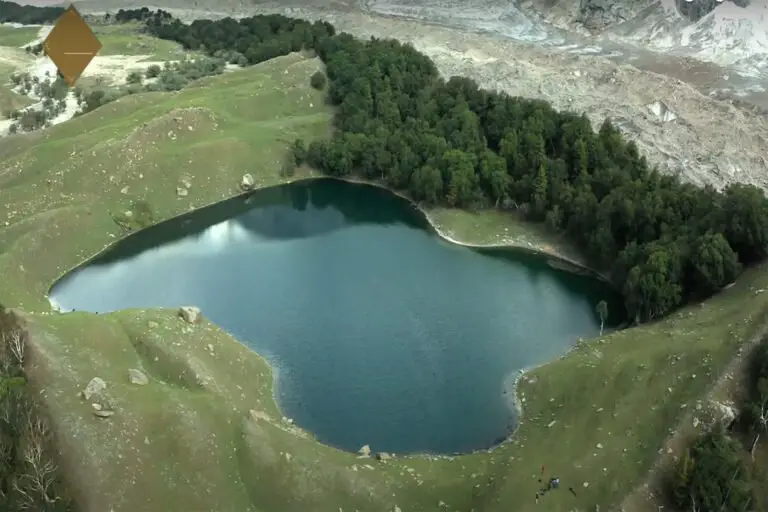
Kutwal Lake, situated at a remarkable altitude of 12,500 feet (3260 meters), stands as one of the highest lakes in the world and is a prominent attraction within the breathtaking Haramosh Valley in Gilgit Baltistan. This pristine lake is encircled by several towering peaks, including Haramosh Peak, Laila, and the Dobani Peak.
Kutwal Lake, once a magnificent gem in the Kutwal valley, Haramosh district of Gilgit-Baltistan, offered a unique blend of natural wonders. It was a place where lush vegetation extended to the water’s edge, ensconced by towering mountains from all directions. What sets this lake apart from others in Gilgit-Baltistan is its captivating combination of snow-capped peaks, dense forests, and serene waters, creating a distinctive and mesmerizing landscape.
The lake’s crystal-clear waters are refreshingly pure and cold, offering mirror-like reflections of the surrounding mountains and trees. In the backdrop, the imposing Haramosh Hill, rising to an impressive height of nearly 1,700 feet (7400 meters), commands attention. It’s almost as if the grandeur of Haramosh Peak is engaging in a silent conversation with the observers.
The lakeside area provides an ideal camping spot, inviting visitors to relish the pleasures of camping in the midst of this pristine natural setting. For those seeking a bracing adventure, a dip in the invigorating cold waters of the lake is a refreshing option.
Kutwal Lake, with its pristine beauty and the healthy environment of Haramosh Valley, is a sight to behold, offering a serene oasis amidst the awe-inspiring landscape. Laila Peak, gracing the southern flank of Haramosh Valley, soars to an impressive elevation of 6096 meters above sea level, adding to the region’s dramatic and breathtaking appeal.
Haramosh Valley Gilgit Mountains
The mountains in the area exhibit stunning patterns, with vibrant yellow hues and distinctive horizontal formations. Sassy is renowned for its rich deposits of mountain minerals, including precious blue gemstones like aquamarine and hydroxylherderite.
It is mostly a desert area, with spectacular views from time to time of green pastures. The challenging living conditions of the inhabitants are exemplified by the cultivated lands among the large black mountains in the region.
A small waterfall on the way to Lake Kutwal. The water is fresh and cold in the ice. This water shower enhances the beauty of the landscape. The view is amazing when sunlight falls on the water. Visitors rest near the waterfall on their way to Lake Kutwal. The water of the falls refreshes them and helps them overcome their fatigue.
The Haramosh Valley in Gilgit Baltistan is an excellent choice for adventure enthusiasts who are passionate about hiking and camping. Whether you’re interested in camping near Lake Kutwal or taking on the challenging mountain roads for a thrilling mountain climbing experience, this valley has it all.

